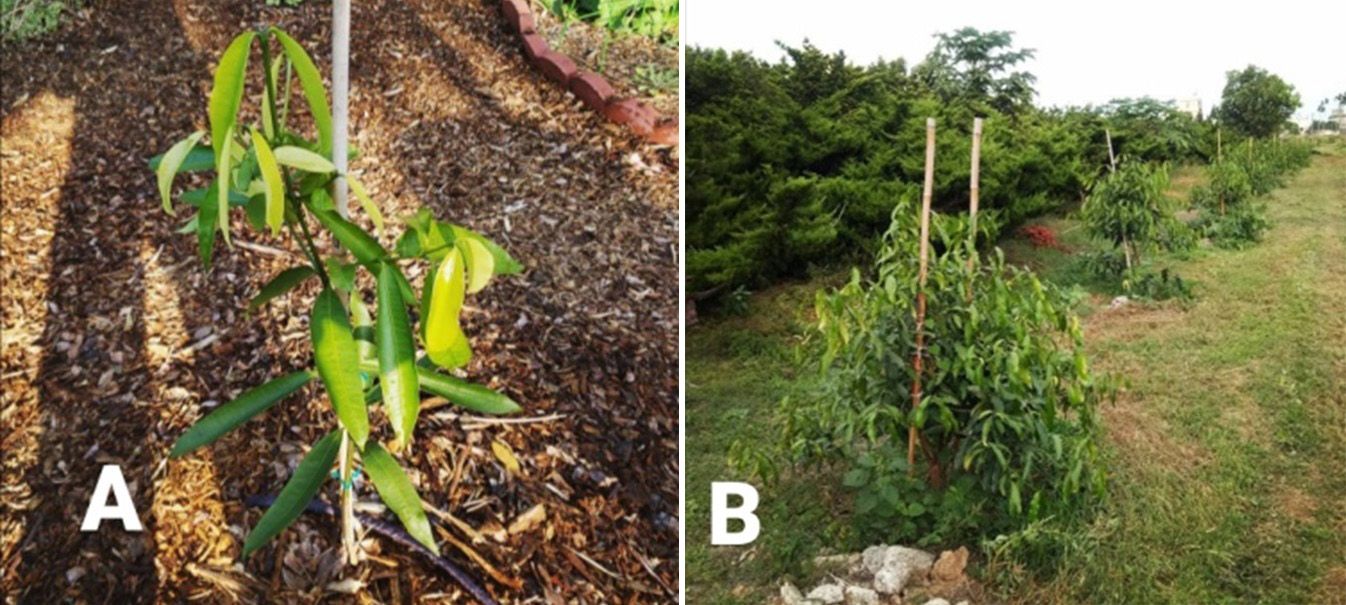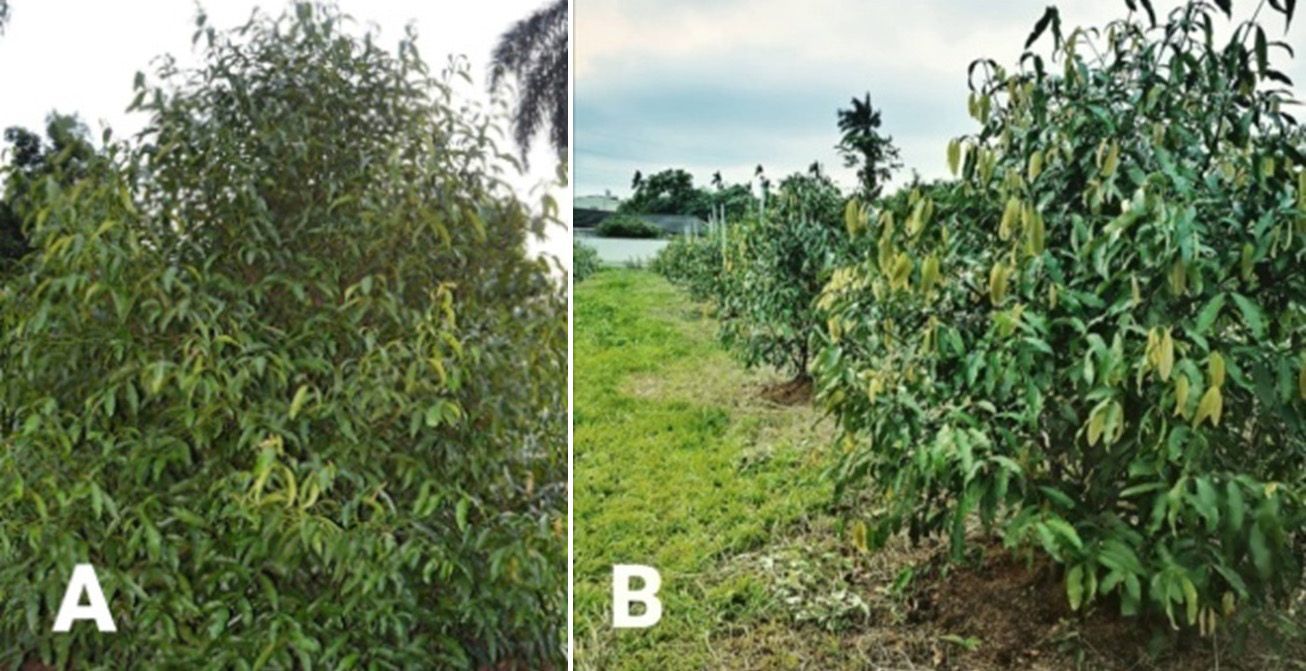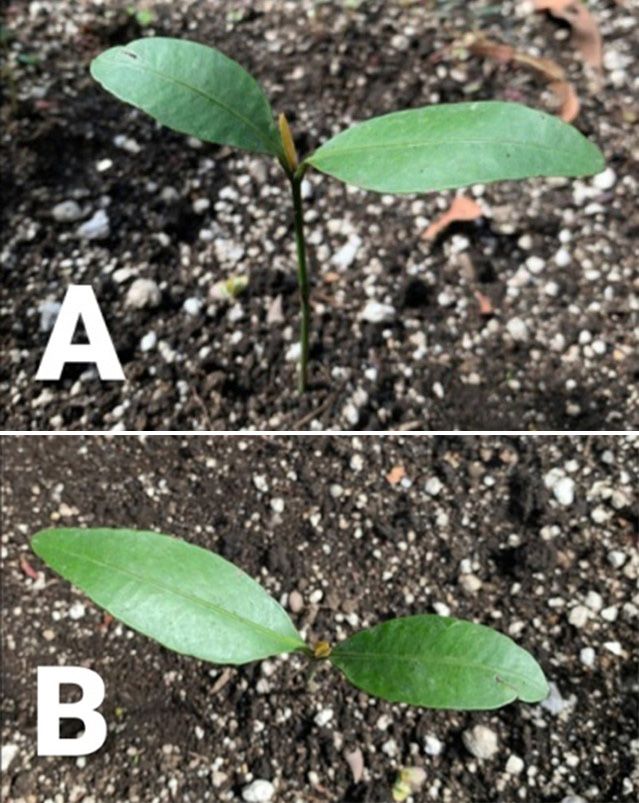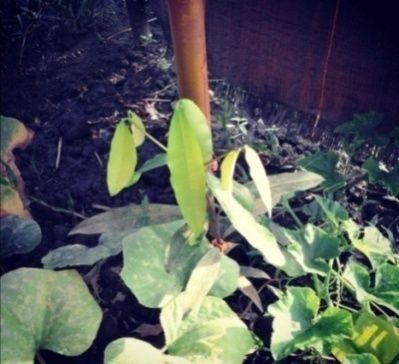Introduction
Garcinia humilis, commonly known as achachairu (ah-cha-chay-ROO), is a tropical-fruit bearing crop that is emerging in south Florida. Though native to the Amazon rainforest, achachairu also grows widely in the Caribbean and South and Central America (Oliver et al. 2018; USDA 2020). Its genus, Garcinia, falls under the Clusiaceae family—formerly known as Guttiferae—and includes several tropical and sub-tropical fruit species. The fruits have attracted certain US markets because achachairu is rich in vitamins, minerals, antioxidants, and many other nutrients. Achachairu’s current use is limited and localized. This publication provides an overview of achachairu growth in Florida to help Extension faculty, growers, crop consultants, certified crop advisors, environmentalists, agricultural-policy makers, and students to better understand the potential of achachairu (G. humilis).
Achachairu is also known as achacha, Bolivian mangosteen or pacuri (Lim 2012) (USDA 2020), and kamuru and guanabacoa (Lim 2012). Planters harvest achachairu in winter and early spring (https://www.trees.com/achacha-fruit-trees); Floridian fruit markets make the teardrop-shaped fruit available from October through January, given natural growth conditions. The fruits of Garncinia h. range from 2.5 to 3 inches (Figure 1) and have orange skin (USDA 1990) and white, sweet pulp (Barboza da Silva et al. 2018).

Credit: (A) Alejandra Cáceres, Santa Cruz, Bolivia; (B) Pablo Bauer, Santa Cruz, Bolivia; (C) Adhemar Gomes, São Paulo, Brazil
Achachairu leaves are glossy, dark green, coriaceous (leathery in texture), and opposite (Figures 2 and 3) (Duarte 2011; Joyner 2000). Monoecious—i.e. having both male and female reproductive organs in the same flower (Duarte and Paul 2015)—Garcinia h. grows creamy white flowers (Marinho 2019).

Credit: (A) Alejandro Guerra, Instagram, Miami, Florida; (B) Chang Chieh Min, PingTung, Taiwan, China
The tree adapts well to warm climates (Winterstein 2016) and moderately acidic to moderately alkaline soils. Optimal pH levels in soil range from 4.7 to 6.6 (Joyner 2000); grown in central Florida, achachairu thrives in well-drained alluvial soil with sufficient moisture (Lim 2012). Garcinia h. can reach a height of 20 to 50 feet (Figure 3) (Duarte 2011; Joyner 2000). There is a 7-acre farm in south Florida that sells achachairu online at https://miamifruit.org/products/achacha-achachairu-box.

Credit: (A) Adhemar Gomes, Sao Paulo, Brazil; (B) Chang Chieh Min, PingTung, Taiwan, China
Growing Achachairu
Mature achachairu-seeds are typically brown, cylindrical, recalcitrant (intolerant to dry conditions or temperatures lower than 50°F), and apomictic (reproducing asexually but by different propagation from cuttings; apomictically produced plants are genetically identical to the parent plant) (Duarte and Paul 2015). Immature seeds are lighter in color and softer than mature ones. The average achachairu has fewer seeds per fruit (1–2 [Duarte and Paul 2015]) than its close relative, the Malabar tamarind (Garcinia cambogia), which carries 6–8 seeds per fruit (Rasha et al. 2015). (Native to Southeast Asia, the Malabar tamarind is widely cultivated in India, Sri Lanka, Malaysia, and Africa [Rasha et al. 2015]. As a fruit crop, the G. cambogia is not classified as invasive.) Achachairu-seed germination can be problematic due to the seed recalcitrancy but improvable by seed coat removal or by applying gibberellic acid (Duarte and Paul 2015).
Direct seeding and grafting are both suitable for propagating achachairu. The seedlings may be transplanted once they reach a size of 16–20 inches (Figure 4). Achachairu scions are grafted onto 3- to 4-year-old ocoro (Garcinia madruno [Kunth] Hammel) at the rootstocks, 10–12 inches above the soil surface (Duarte and Paul 2015; Joyner 2000). Grafting is the preferred method; grafted plants can be harvested earlier for a better market price. Over-irrigation is detrimental, increasing the risk of root disease. In the orchard, achachairu plants should be spaced at 26–33 feet (SNV 2019). Achachairu trees can tolerate partial shade during the early growth stage (Paul and Duarte 2011) and can be intercropped with maize, bell peppers, eggplants, tomatoes, other fruit crops, and even vegetable crops (Figure 5).

Credit: (A) and (B) Sergio Gonzalez, Alta Verapaz, Guatemala

Credit: Chang Chieh Min, PingTung, Taiwan, China
There is no fertilizer recommendation available for commercial achachairu production in Florida. Achachairu growers may use the recommendations for litchi production (https://edis.ifas.ufl.edu/publication/MG051) for the time being because these two fruit-crops are similar in size and productivity in Florida. Pruning can make harvesting simpler and easier. Achachairu fruit species can be pruned in the early growth stage. Pruning older trees should be primarily limited to the damaged branches or those close to soil (Duarte and Paul 2015).
Generally, achachairu are most affected by fruit flies (Duarte 2011). Leaf and fruit anthracnose is the main disease (Duarte and Paul 2015). If you see pests or disease symptoms, contact your local UF/IFAS Extension office for a diagnosis and recommendations.
Achachairu Consumption
Achachairu have diverse applications. The trees can be grown as ornamentals (Joyner 2000). The achachairu rind can be used for winemaking (Lim 2012), and natural extracts of dry leaves have shown antibacterial properties (Osorio, Londoño, and Bastida 2013). Achachairu fruit can be consumed raw or incorporated into juices, pastries, sorbets, ice-cream, desserts, jams, or jellies (Winterstein 2016; Marino 2019).
Summary
Achachairu may turn a profit in Florida. This fruit crop can diversify Florida’s farming systems, fruit markets, and food supply, strengthening Florida’s fruit industry. Florida’s unique climatic conditions present many advantages for commercial achachairu production.
Acknowledgements
Dr. Edward Hanlon, professor emeritus at the Department of Soil, Water, and Ecosystem Sciences at UF/IFAS, reviewed and improved this manuscript.
References and Further Reading
Abreu, N. C., S. M. Barbosa, E. S. C. Gurgel, and W. V. Carvalho. 2017. “Morphoanatomy of Garcinia madruno (Kunth) Hammel (Clusiaceae) under Waterlogged Conditions.” Revista Brasileira de Fruticultura 39, no. 5: 1–8. https://doi.org/10.1590/0100-29452017012.
Duarte, O. 2011. “Achachairu (Garcinia humilis [Vahl] C. D. Adam).” In Postharvest Biology and Technology of Tropical and Subtropical Fruits, edited by E. Yahia, 48–54. Sawston: Woodhead Publishing. https://doi.org/10.1533/9780857092762.48.
Duarte, O. and R. E. Paull. 2015. Exotic Fruits and Nuts of the New World. United Kingdom: CABI. https://books.google.com/books?id=XuluBgAAQBAJ&pg=PA49&lpg=PA49&dq=achachairu+durate+2011&source=bl&ots=o6nc5Yadwa&sig=ACfU3U0cngOxRtZt8hhsWZAivMKs4jV3QA&hl=en&sa=X&ved=2ahUKEwjAzMDm09TpAhUETd8KHXXJBuQQ6AEwAnoECAoQAQ#v=onepage&q=achachairu%20durate%202011&f=false.
Joyner, G. 2000. “The Madrono.” UF/IFAS Palm Beach County Cooperative Extension Service. Accessed July 1, 2020. http://www.quisqualis.com/28madjoy.html.
Lerner, B. R., and P. Hirst. 2002. “Pollination of Fruit Trees and Nuts.” Purdue University Cooperative Extension Service. Accessed June 10, 2020. https://www.purdue.edu/hla/sites/yardandgarden/wp-content/uploads/sites/2/2016/10/HO-174.pdf.
Lim, T. K. 2012. “Garcinia humilis.” In Edible Medicinal and Non-Medicinal Plants. https://doi.org/10.1007/978-94-007-1764-0_9.
Marinho, L. C. 2019. “A New Combination in Garcinia (Clusiaceae) Based on Rheedia martinii, a Tree Species from Suriname.” Harvard Papers in Botany 24, no. 2: 127–129.https://doi.org/10.3100/hpib.v24iss2.2019.n7.
Oliver, D. J., S. Wanyonyi, P. Mouatt, S. K. Panchal, and L. Brown. 2018. “Achacha (Garcinia humilis) Rind Improves Cardiovascular Function in Rats with Diet Induced Metabolic Syndrome.” Nutrients Journal 10. https://doi.org/10.3390/nu10101425.
Osorio, E., J. Londoño, and J. Bastida. 2013. “Low-Density Lipoprotein (LDL)-Antioxidant Biflavonoids from Garcinia madruno.” Molecules 18, no. 5: 6092-6100. https://doi.org/10.3390/molecules18056092.
Paul, R. E. and O. Duarte. 2011. “Tropical Fruits”. Accessed May 25, 2023. https://books.google.com/books/about/Tropical_Fruits.html?id=YYH_lJ5uOAwC.
Rasha, H. M., A. Salha, A. Thanai, and Z. Zahar. 2015. “The Biological Importance of Garcinia cambogia: a Review.” Journal of Nutrition and Food Science S5, no. 4. https://doi.org/10.4172/2155-9600.S5-004.
Silva, B. L. B., E. Costa, F. F. S. Binotti, C. G. S. Benett, and A. G. Silva. 2018. “Growth and Quality of Garcinia humilis Seedlings as a Function of Substrate and Shading Level.” Pesquisa Agropecuária Tropical 48, no. 4: 407–413. https://doi.org/10.1590/1983-40632018v4853500.
SNV Netherlands Development Organization. 2019. “Fruit Crops Production and Management.” Accessed June 3, 2020. https://snv.org/cms/sites/default/files/explore/download/eth_fruit_crops_production_and_management_student.pdf.
USDA. 2020. “National Plant Germplasm System Garcinia madruno (Kunth) Hammel.” Accessed July 1, 2020. https://npgsweb.ars-grin.gov/gringlobal/taxonomydetail.aspx?id=411002.
USDA. 1990. “Plant Inventory N199 Part II.” Accessed May 26, 2020. https://www.ars-grin.gov/npgs/pi_books/scans/pi199pt2.pdf.
Winterstein, M. 2016. “Fruit of the Month—Achachairu (Bolivian Manogosteen).” Bonita Springs Tropical Fruit Club Newsletter, http://bstfc.org/bstfc1/jul/BSTFC_newsletter_07_2016.pdf.